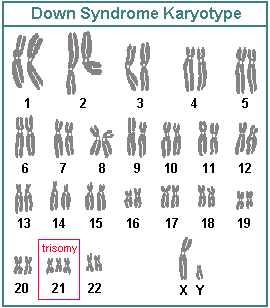
 |
Freethought & Rationalism ArchiveThe archives are read only. |
|
|
#11 | |
|
Contributor
Join Date: Jul 2000
Location: Lebanon, OR, USA
Posts: 16,829
|
Quote:
|
|
|
|
|
|
#12 | |
|
Veteran Member
Join Date: Jun 2001
Location: Denver, CO, USA
Posts: 9,747
|
Quote:
With much of it, this is certainly true. However, there much of "junk" DNA arose through reverse transcripts of mature mRNAs that were randomly inserted into the genome (when you see things like a degenrate poly A tail, you know that's what you're dealing with). It's hard to imagine what function these could have (though there is the very rare occasion where this makes a functional gene duplicate). It would be one thing if we knew nothing about the origins of this "junk", but since we do, the ID/cre position is hard to justify. theyeti |
|
|
|
|
|
#13 | |
|
Veteran Member
Join Date: Jun 2001
Location: Denver, CO, USA
Posts: 9,747
|
Quote:
The problem with the mutagen absorbing hypothesis(IMO) is that it's hard to see why this is that helpful. At best, it only seems like it would lower the mutation rate just a little bit. It would work on some chemical mutagens, but not on things like UV radiation or replication errors, which are probably responsible for most of our mutations. It seems like a lot of energy to expend for such a little gain. Also, there is the question about the distribution of the "junk" in phylogenetic terms. Bacteria and other single celled organisms have very little or no junk, and yet they are probably exposed to the most mutagens. How would the mutagen absorbing theory explain this? theyeti |
|
|
|
|
|
#14 | |
|
Veteran Member
Join Date: Jan 2001
Location: USA
Posts: 1,072
|
Quote:
|
|
|
|
|
|
#15 | |
|
Veteran Member
Join Date: Jun 2001
Location: Denver, CO, USA
Posts: 9,747
|
Quote:
theyeti |
|
|
|
|
|
#16 | |
|
Senior Member
Join Date: Dec 2001
Location: Toronto, Ontario, Canada
Posts: 762
|
Quote:
  A picture is worth a thousand poorly chosen words. |
|
|
|
|
|
#17 |
|
Veteran Member
Join Date: Aug 2000
Location: Australia
Posts: 4,886
|
Isn't there something in genetics where traits can be "turned off" though? What's the term for this?
I think that is what is happening in the manx breed of cat: Rather than having a short tail it apparently has no tail. And the sphinx breed (with fur on its tail!):  So maybe most of that "junk" is for things that we no longer use - like tails, etc. It would have been mutated a lot and since natural selection isn't making sure that it stays useful, the mutations would just build up until it becomes complete junk rather than perfect tails, etc, that can just be switched on. BTW, is there a term for when these traits get turned back on? - e.g. a mutation that makes you very hairy could be a reversion or is it called a retroversion or what? [ March 17, 2002: Message edited by: excreationist ]</p> |
|
|
|
|
#18 | |
|
Senior Member
Join Date: Jan 2002
Location: California
Posts: 646
|
 Meow! Regarding 'junk' DNA, I kinda hate to mention it since I'm beginning to sound like I'm starting the Cavalier-Smith fan-club here, but Cavalier-Smith has written a bunch of articles, plus a book, on the 'c-value paradox' (why complexity in eukaryotes does not correlate with genome size). Instead the amount of DNA correlates basically with cell volume. E.g. bigger cell volume, more 'junk' DNA. The basic idea is that the noncoding DNA is indeed nonfunctional informationally ('junk' in that sense) but has a structural function in spacing out the genes (a 'skeletal' function), perhaps in bigger cells this allows more rapid access to the DNA, more rapid protein synthesis, etc. This would explain why there is so much 'junk' from the informational perspective, but from the biological perspective it may not be junk, although "spacer sequences" is not exactly a pro-ID function IMO. The above is my garbled & partial understanding of the situation. Here is a place to start though: Quote:
|
|
|
|
|
|
#19 | |||
|
Banned
Join Date: Nov 2001
Location: Elkhart, Indiana (USA)
Posts: 460
|
DNAUnion,
You said: Quote:
Quote:
Quote:
In Christ, Douglas |
|||
|
|
|
|
#20 | ||||
|
Veteran Member
Join Date: Nov 2001
Location: NCSU
Posts: 5,853
|
Hey, Douglas, you appear to believe in kinds. Will you look at my challenge in <a href="http://iidb.org/cgi-bin/ultimatebb.cgi?ubb=get_topic&f=58&t=000367" target="_blank">this</a> thread.
Quote:
Basically, gene similarities, in toto, do not fit "common design" because the relationships we observe do not make design sense. On the other hand, they match up well with the relationships infered from the fossil record and extant organisms. Quote:
Quote:
Refering to chimp and human chromosomes: Quote:
-RvFvS [ March 18, 2002: Message edited by: RufusAtticus ]</p> |
||||
|
|
| Thread Tools | Search this Thread |
|